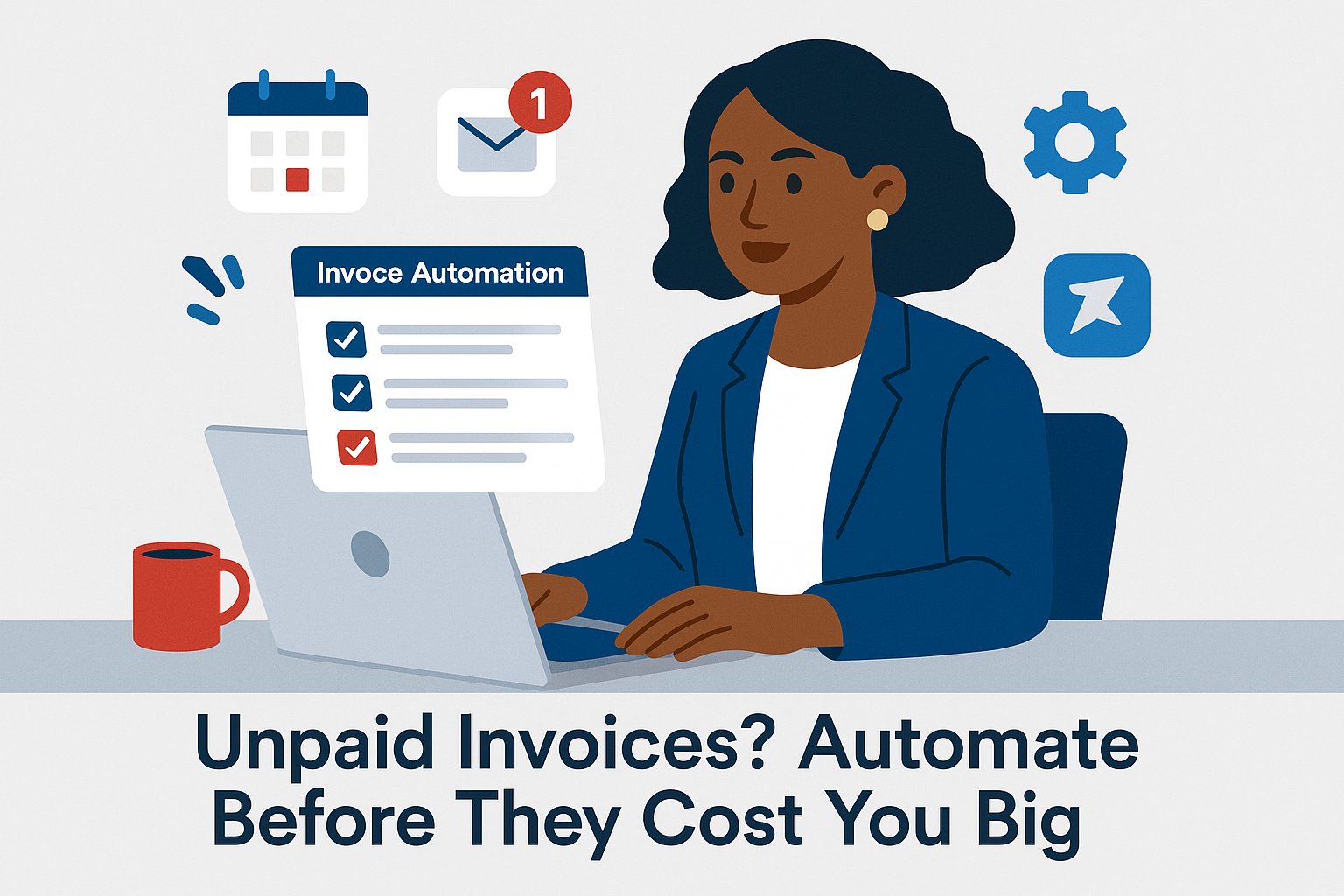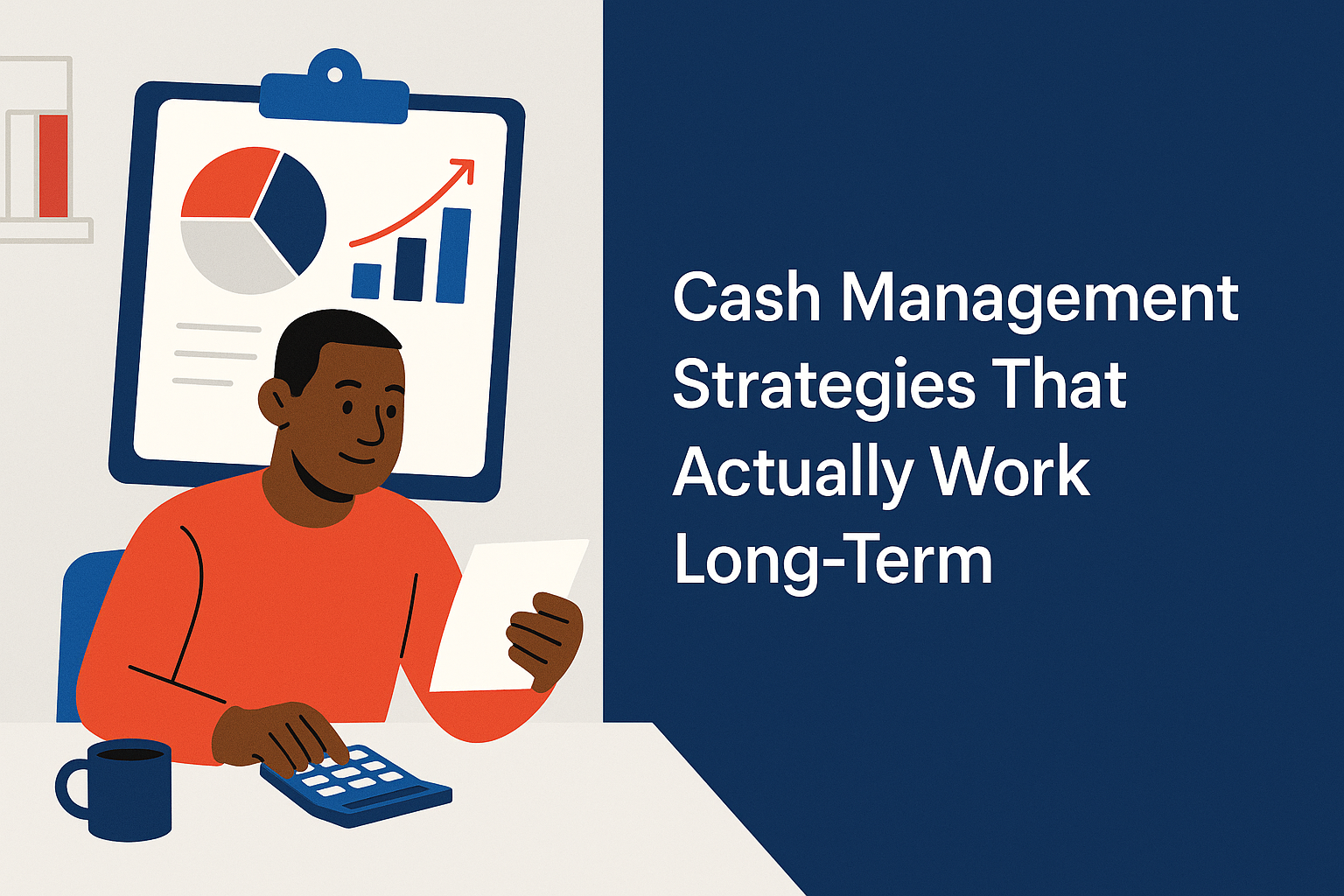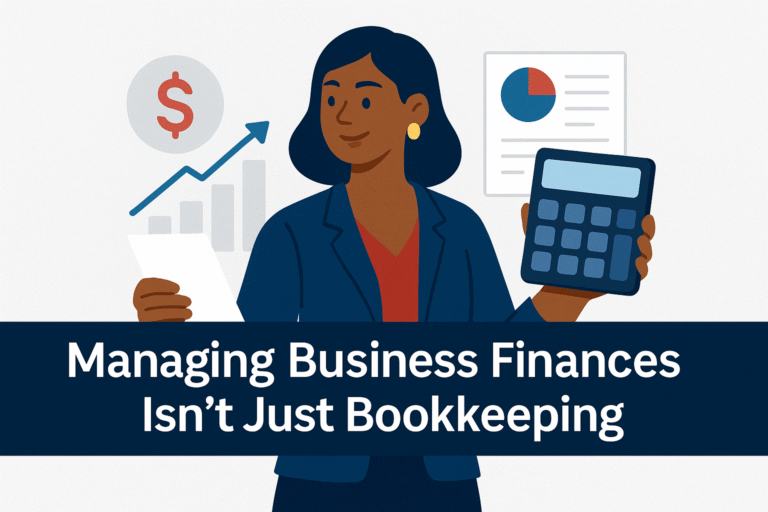Financial Freedom Fridays

I’ve been there, during my early days. I’d just been laid off, and every dollar had a job. There were costs to get started, tools to pay for, and real people counting on me to deliver. But before I had steady income, I had to answer one hard question: where was the money going to come from?
I wasn’t bad with money. Small business cash flow management wasn’t a new concept to me when I started my own business—I’d taught workshops on it. I knew how to read a cash flow statement, how to forecast, how to explain the difference between profit and cash in plain English. I knew I had to figure out how to get from point A (low funds) to point B (successfully servicing clients).
If you’re in that same early stage—where the math is personal and the margins are tight—this post is for you. You don’t need to master spreadsheets or become an accountant. You just need a few clear habits to stay in control of your cash and confident in your growth.
Why Cash Flow is the Lifeline of Your Small Business
Small business cash flow management doesn’t just cover your bills—it shapes how you show up.
In those early days, when uncertainty is already high, knowing exactly what’s coming in and going out can offer a strange kind of peace. It lets you focus. It gives you choices. It becomes the difference between operating reactively and leading proactively.
When cash is tight or unpredictable, every decision feels heavier. You hold off on investments. You hesitate on pricing. You undercharge just to land the sale. But with even a basic handle on your cash flow, you start moving differently—with more control, more clarity, and way more confidence.
That’s why cash flow is the lifeline. Not just because it funds your operations, but because it supports the energy and mindset you bring to your business every single day.
What Is Cash Flow (And Why Most Small Businesses Ignore It)
Cash flow is simply the money moving in and out of your business. Sounds obvious, right? But most new entrepreneurs don’t track it closely. They’re chasing profit but ignoring liquidity—what’s actually available in the account, right now, to run the business.
Here’s where it gets tricky: your business might look profitable on paper but still feel broke in practice. Why? Because you can’t spend promises. You can’t pay bills with invoices. You might make the sale—but if the money hasn’t hit your account yet, your cash flow hasn’t caught up.
This is especially important when you start leveraging—whether that means using credit cards to cover upfront costs, hiring before the revenue justifies it, or investing in tools expecting future returns. Leverage magnifies both your growth and your gaps. If your inflows are delayed or unpredictable, that leverage can quickly become a liability.
And then there are returns, refunds, or late payments—factors that don’t always show up in your revenue report but hit your bank account hard. You think you’ve made $5,000 this month, but if $2,000 hasn’t cleared and $500 gets refunded, your available cash might be far less than you expected.
Positive cash flow doesn’t just mean you’re earning. It means you’re collecting. It means you can reinvest in your business, pay yourself with confidence, and make decisions based on stability—not desperation.
Top 5 Cash Flow Mistakes New Entrepreneurs Make

Delayed invoicing? Been there. I worked with clients whose services were partially subsidized by a larger organization. The clients paid their portion upfront—half the total bill. But the other half, covered by the subsidizing company, was due after the work was done. One day the company who subsidized payments went silent. Emails ignored. Invoices unanswered. That final payment never came. And let me tell you, it wasn’t just frustrating—it hurt. I’d done the work. I’d planned around that income. And I didn’t get paid.
Skipping tax savings? That one’s common. It’s easy to treat all revenue as usable money until the IRS reminds you otherwise. Set it aside upfront. Always. When the customers or clients pay their taxes, that’s not money for you to spend as you will. Those are funds due for taxes. Setup a separate account for it, if that’s what it takes.
Overspending on software? Guilty. I’m a software person by trade and by heart—I love new tools. But at some point, I had to get honest about wants vs. needs. I didn’t need every platform. I needed the right platform. That’s how I ended up with Zoho One—it gave me the flexibility and coverage I needed without drowning me in monthly fees.
Ignoring seasonality? Another common trap. Business has rhythms. Peaks and dips. If you only plan for the peaks, the dips will wipe you out. A friend of mine who was in the real estate industry once called it feast or famine, and that’s how he lived—never setting aside funds after a sell to help him ride through the dry months.
Relying too heavily on one client? That same subsidizing company? They were a big part of my market at the time. When they ghosted on the last payment, it didn’t just mess with one invoice—it shook the whole foundation I’d built. That’s when I realized: no matter how stable something seems, overreliance is always a risk.
The good news is, once you spot these patterns, you can fix them. Cash flow discipline isn’t about perfection. It’s about awareness, boundaries, and habits.
Simple Cash Flow Habits That Make a Big Difference

Here’s what I recommend (and practice myself):
Do a 10-minute money check-in every Friday. Look at what came in, what went out, and what’s coming up. You’ll catch issues early—before they snowball.
Use one tool to track your cash. I use Zoho Books, but even a basic spreadsheet works if you stay consistent. The goal isn’t fancy. It’s clarity.
Separate business and personal accounts. Seriously. Blending them makes your books a mess and your taxes worse. Open a free business checking account if that’s all you can do today.
Forecast your next 30 days. Not your best-case scenario—your actual bills, upcoming renewals, and client payments. That alone can keep you from overcommitting.
Link delivery to payment. One of the best things I did early on was start requiring upfront deposits or full payment before handing off a finished product. It shortened the cash cycle and gave me more peace of mind. No chasing, no waiting.
Cash flow gets harder to manage as your business grows—but it’s easier to start right than to fix later. Think of your cash like oxygen: it needs to circulate. Stagnant money can’t support you. Build small systems that keep it flowing.
How to Improve Cash Flow Before You Need a Loan

The real work is in strengthening your systems before you ever need outside help. That’s where long-term stability is built.
Ask for deposits. Never front-load 100% of the work without a financial commitment. Even a partial deposit creates buy-in, reduces risk, and keeps your cash cycle moving. My own services require an upfront investment—and I offer a paid-in-full discount to reward commitment and simplify the process for both sides.
Build recurring revenue. Subscriptions, retainers, maintenance plans—anything that provides predictable monthly income helps you stop starting from zero. Patreon is a great example of this model. Even if you’re not ready for full-blown memberships, start thinking about how you can package your services to create continuity.
Automate from inquiry to invoice. The faster someone can move from “I’m interested” to “I’ve paid,” the healthier your cash flow becomes. My products are fully automated—from checkout to delivery. And while my services require an application, once approved, the payment process is also automated, which removes delays and awkward follow-ups.
Price with intention. Don’t underprice yourself just to land a client. That race to the bottom only attracts the kinds of customers who vanish when you try to raise your rates. Every product I offer is priced based on its time investment and break-even point. My services, which require hands-on work and customization, are priced accordingly—because they deliver premium value and require premium energy.
Strong cash flow isn’t about getting lucky. It’s about designing your business to be sustainable, long before you ever think about loans or outside capital.
Cash Flow and Confidence: Why It Affects How You Show Up
Let’s talk mindset for a minute—because small business cash flow management isn’t just operational. It’s deeply emotional. When your cash is unpredictable, it shows. In how you pitch. In how you price. In how you carry yourself.
I’ve seen it in myself. When the numbers felt murky, I hesitated more. I undercharged. I second-guessed decisions that should’ve felt clear. But once I started tracking consistently—once I knew exactly what I had and what was coming—I led differently. More grounded. More confident.
That’s the real power of cash flow. It’s not just about staying afloat—it’s about showing up in your business like the founder you’re becoming.
Make Cash Flow a Priority—Not a Problem.
Small business cash flow management is more than math—it’s the rhythm of your business. The pulse that keeps things moving. And when that rhythm is off, everything feels harder. But it doesn’t take a financial overhaul to fix it. Just a few small systems. A few intentional choices. A few habits you can start today.
And when you do? You gain something even more valuable than money: peace of mind and the power to grow on your terms.






